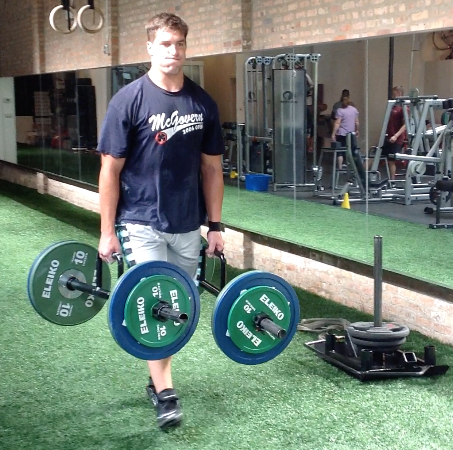Using Science To Improve Sport Specific Conditioning
I often get asked the question “what type of conditioning do you do with your athletes?” and my answer is always the same……”it depends on the sport, position and individual.” No two sports are exactly alike and no two positions in a given sport are exactly alike either. This article will give a brief overview of the different physiological energy systems and how each one is impacted by activity, exercise and sports.
To begin, it would be worthwhile to clearly define what energy is and the different types of systems that the body utilizes to produce and maintain energy. The body maintains a continuous energy supply through the use of adenosine triphosphate or ATP. You all may remember ATP from high school biology as the special carrier for free energy. Ultimately the food that you eat will go through many processes to eventually produce ATP. When your talking about producing energy for work (albeit for normal daily activities like grocery shopping or sporting events like sprinting a 100 meter dash) your body has three methods of producing that energy. The three methods are known as the phosphagen system, glycolosis and the aerobic system. Depending on the intensity and duration of your sport/activity you may use one, two or all three of these systems.
The phosphogen system (aka ATP-CP system) is the primary energy system that is used in bouts of physical work under about 10 seconds (depending on the individual the phosphogen system may be slightly shorter or longer than 10 sec). In this systems you muscle basically uses its stored ATP for energy. A working muscle can re-synthesize ATP from creatine phosphate or CP and between the two (stored ATP and re-synthesized ATP from CP) you can produce physical work for about 10 seconds. After that, your body needs to start producing energy through the breakdown of carbohydrates by the process of glycolosis.
Glycolosis is the primary systems that produces ATP between 10 seconds and 2 minutes of work. Carbohydrates in the form of either blood glucose or stored muscle glycogen are broken down in the muscle cell through a series of chemical reactions that ultimately form pyruvate. Through this process two ATP will be produced. If the production of pyruvate is greater then the supply of oxygen then the pyruvate gets converted to lactate (which will drop the PH level in your muscles and give that all too familiar burning feeling). Neither the phosphogen system or glycolosis are oxygen dependent meaning they do not need oxygen to produce energy. Therefore they are both considered anaerobic energy systems.
The aerobic energy system is basically used to produce energy after 2 minutes of work. This is the primary energy systems used in longer endurance events like 5K races, triathlons and other endurance events. During this process a molecule of either glucose, glycogen or fat gets transported into the cell’s mitochondria and goes through several processes to ultimately produce high levels of ATP (36 for glucose and glycogen and up to 129 for fat).
OK, so what does all this mean? Well, depending on your sport’s energy demands you may need to emphasize the development of one or more of the these energy systems. Common misconceptions amongst coaches is to have hockey players ride a stationary bike for 45-60 minutes claiming that it improves aerobic capacity. Although that may be true, hockey shifts typically last no longer then 45 seconds. So by the rules of physiology you are not even coming close to using the aerobic system for the production of energy. In large part most of a hockey player’s energy is produced through the phosphogen and glycolitic systems. Therefore it would be unwise to have a hockey player perform long duration/low intensity training training when the demands of his/her sport are obviously much different. When designing a strength and conditioning program for any sport you should look at the energy demands of that sport and try to mimic your ‘conditioning’ program around those energy systems. For instance, since a typical shift in hockey is 45 seconds and there is about 2 minutes in between shifts, you may want to have your hockey players push a sled at a high intensity for 45 seconds then rest for 2 minutes and repeat 3-4 times (depending on the line that a player is on he or she may be on the ice for 4-5 shifts per period. You may then want to give the athlete about 8-10 minutes off depending on the level of hockey that they play, pick another exercise and repeat the process 2 more times (since there are 3 periods in a hockey game).
This principle of ‘sport specific’ energy systems development can be applied to athletes from all disciplines. The main characteristics of a good conditioning program is to analyze the energy demands of the sport (i.e. work:rest ratio) and mimic them as close as possible in the weight room.
At PTS, our coaches are skilled at analyzing the energy demands of all sports and appropriately designing training programs around each athlete’s needs. For more information on how specific energy system training could improve your athletic performance email us at info@performancetrainingsystems.com and set up an evaluation with one of our coaches.
By: Bobby DeThomasis

